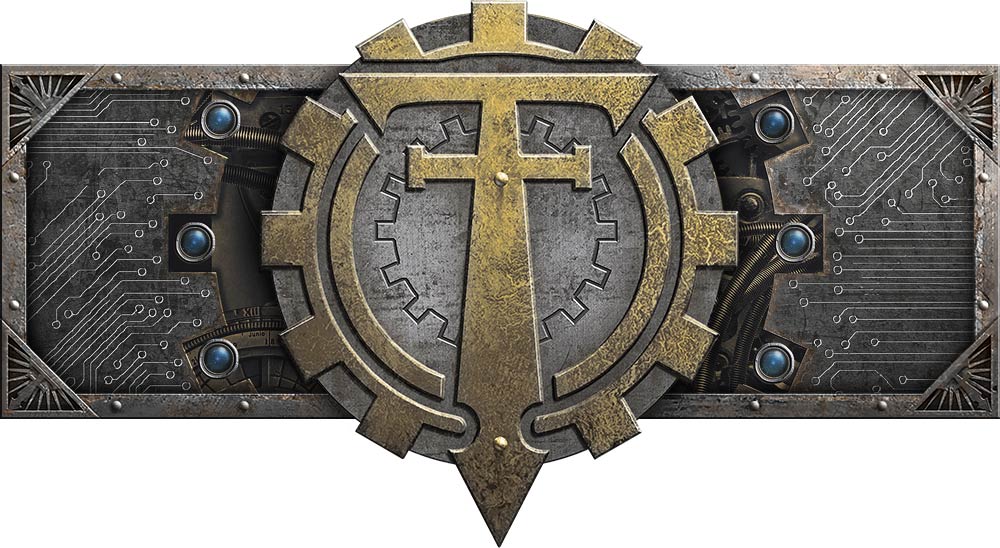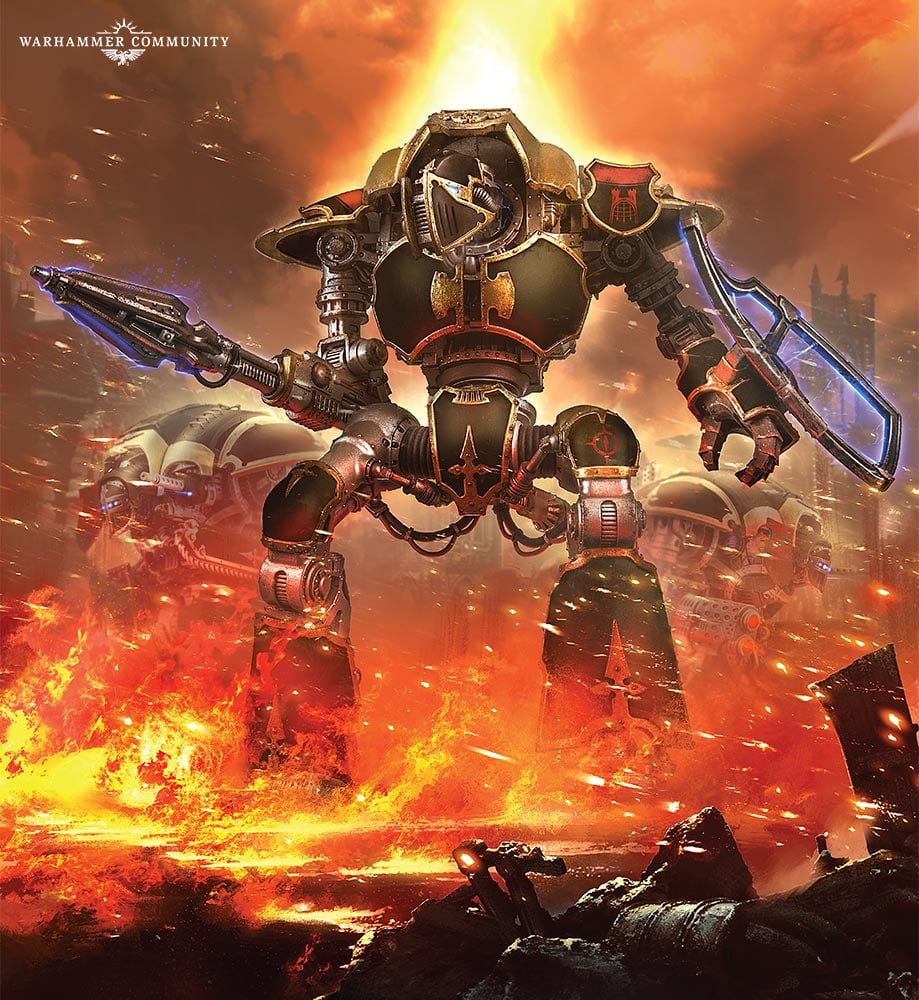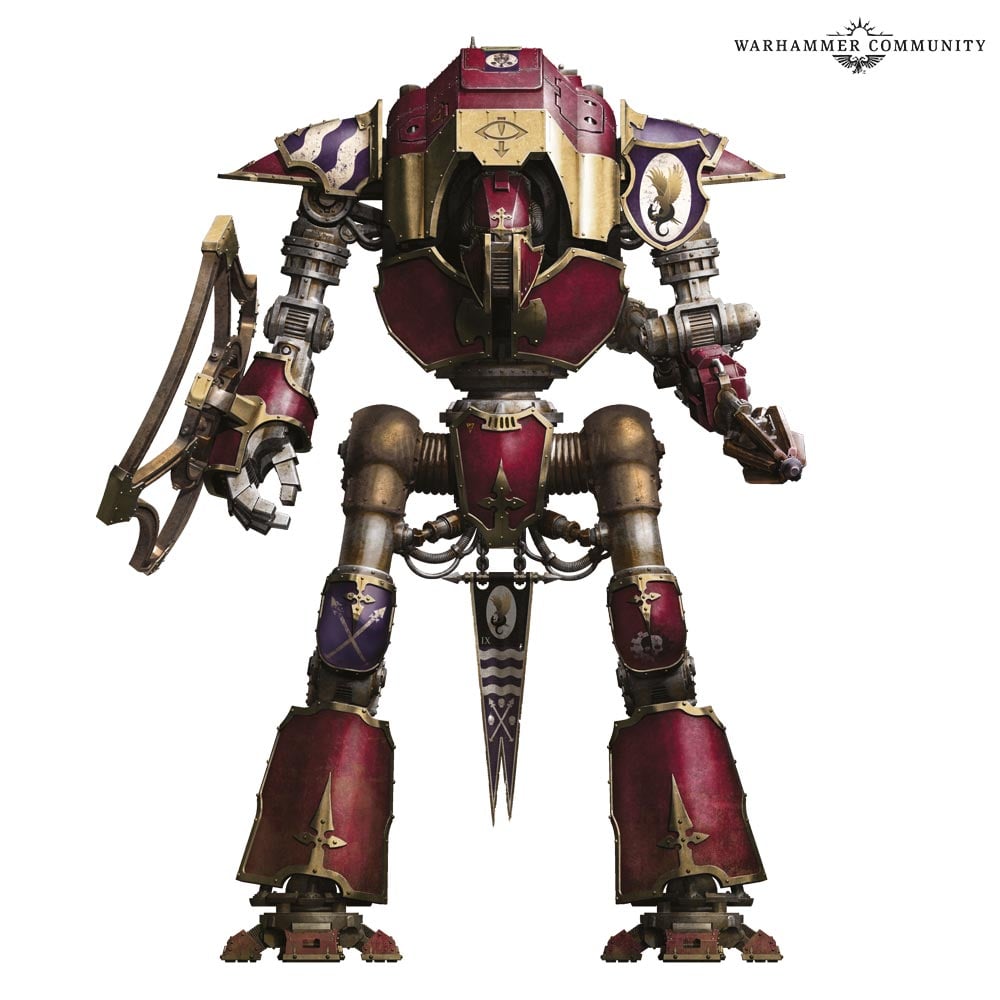What is the Battle of Molech?

The new Adeptus Titanicus expansion, Doom of Molech, is on its way – and today we’re taking a look at the Battle of Molech itself.
One of the key battles of the Horus Heresy, Molech was first mentioned back in the mists of time when White Dwarf had numbers on the cover – the number, in this case, was 190 in October 1995. Gav Thorpe (a name you might just recognise…) wrote about the betrayal of the Knight House Devine at Molech as part of an article on new Slaanesh models for the Epic game system. Here’s what he had to say:
“One of the most horrific betrayals of the war occurred on the planet of Molech.
Three Titan Legions and over a hundred Imperial Guard* regiments and Knight Households stood ready to bear the brunt of the Warmaster’s attack. When it came, it was like a hurricane unleashed upon the lush world.
Horus’ initial assault devastated many cities and strongholds. Amongst the victims were Molech’s rulers, House Devine. Dispossessed and unable to fight back, the Devine slowly succumbed to the temptations of Chaos. Over the following months, the insidious whisper of Slaanesh spread through their depleted ranks.
When Horus launched a massive offensive, the Knights of House Devine performed an act of total treachery and turned on the troops who remained loyal to the Emperor. This treachery allowed the Chaos host to punch through the Imperial defence, leaving them with no line of retreat. They were totally defeated.”
Nearly two decades later, Graham McNeill explored the battle further in his Horus Heresy novel Vengeful Spirit, taking the structure sketched out by Gav and filling it in – including a compelling reason why Horus spent so much effort on a backwater world…
House Devine are key players in the story of the battle, with their treachery turning the tide just as that initial narrative suggested – but their fall began decades before with Raeven Devine, a young scion of the house whose unfettered ambition and questionable life choices primed him for a fall to Chaos.
Years later, as the battle began, Raeven seized his birthright, murdering the head of the House and taking his place even as Horus himself took to the battlefield, leading his sons into battle against massed ranks of Imperial Army troopers and single-handedly taking on a force of mighty Imperial Knights – of which only Raeven Devine himself escaped alive.
With a beachhead secured, the Traitor forces arrived in great numbers, with four Titan Legions and elements from the Sons of Horus, Death Guard and Emperor’s Children – including their Primarchs – leading the charge. Mortarion and Fulgrim both had their missions across Molech, each key to taking the embattled world from the Imperium.
Far to the east, Mortarion fell on the city of Ophir, before unleashing the Life-eater Virus on the jungles of Kush in an early example of the plague warfare for which the Death Guard would become infamous. He then marched on the Preceptor defence line and took it with the aid of Traitor Titans. You can play part of this battle with one of the scenarios in Doom of Molech, which pits a force of Traitor Titans against an army of Knights as the heroic Lord Bolmar of House Donar makes a desperate last stand.
Fulgrim’s task was much more insidious – he used his Slaanesh-granted daemonic powers to ensnare Raeven Devine and complete the corruption that had begun decades before.
As the Primarchs completed their tasks, the Sons of Horus and their allies pushed into the heart of Molech. The Knight Houses led the defence, rallying Imperial Army regiments, small forces of Ultramarines, Blood Angels and loyal Titan Legions to face the rampaging Chaos forces. Little by little, they were pushed back, the overwhelming strength of the Warmaster’s armies making it only a matter of time until they were overrun completely.
Finally, all of Horus’ forces converged upon Lupercalia, the capital of Molech, ironically named for Horus himself after his pivotal role in bringing Molech to compliance during the Great Crusade. The first turning point in this fierce battle was the destruction of the Iron Fist, the great mountain on Lupercalia’s west flank. Horus managed to destroy this home of the world’s Titan Legions in a single blow as he redirected an orbital defence laser to destroy the peak.
The final nail in the Imperial coffin came when the Imperator Titan Paragon of Terra, lynchpin of the defence, was laid low by a treacherous attack from House Devine’s Knights. This gave the Traitors free rein to take Lupercalia, though Horus abandoned the battle before the end in order to complete some objective unknown to the history books…
You’ll be able to play many of the battles from the war for Molech in the new Adeptus Titanicus campaign book Doom of Molech, which you can pre-order this weekend. To get a closer look at the battle itself, check out Graham McNeill’s novel Vengeful Spirit, which reveals all… including exactly what Horus was doing as Lupercalia burned. Download the eBook now and get reading, or listen while you paint Titans and Knights with the MP3 audiobook.
* Back in 1995, the distinction between the Heresy-era Imperial Army and the later Astra Militarum hadn’t yet been made.





No comments:
Post a Comment